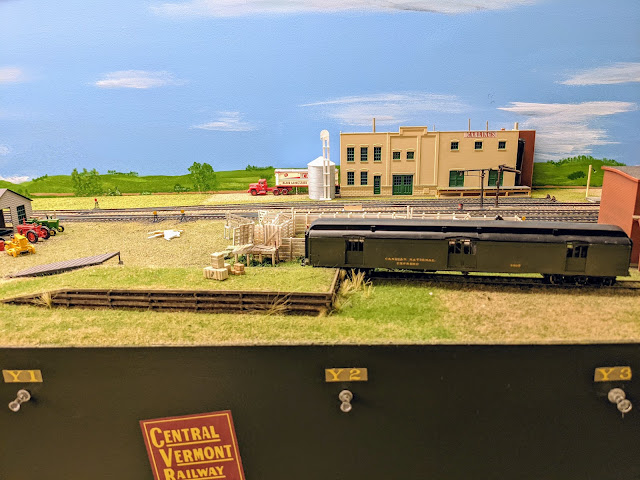Behind the main door were 1"x6' or 2"x6' or 8' boards just slightly wider than the door. They slide down a slot and filled the doorway space. One or 2 of these boards had cuts in them to create a small opening. This opening had another board on it that also slid in a slot and could then be opened to let the grain run out. As the level by the door came down you would remove these boards until you got down to the opening then you would shove the auger into the bin. The grain running out the opening could be fed into a small hopper or into a hole that was dug into the ground. There was one other note to this description- the ambient temperature was either + 30C or - 30C doing this job and the combine or the grain elevator were filling so don't dawdle!
You can change the capacity of the bins by how many rows of rings you use.
4 rings = 1350bus
5 rings = 1650bus
6 rings = 1950bus
I have wood floors and concrete floors. For the wood floors I used scribed styrene .04 with .06 scribe to represent 2 layers of 2x6 planks, with either 4x4 or 6x4 skids under the floor. For concrete I used .08 plain sheet styrene with my bin sitting on top of the concrete. The other way was to have the bin sitting on supports and the floor poured with the bin in the concreate. In all cases wood or concrete types you would most likely see tar applied to the bottom ring where it meets the concrete to help keep moisture out of the bin. This detail can be just painted on with black craft paint as it is a little thicker. I chose to make my own doors out of .01 styrene with a backer made out of flat .02 styrene so they stand off the wall. This is far easier than trying to make a frame out of a strip. If the door was open you would see steel frames that drop down just like a wood bin. One of the panels would have a 6-10" hole cut in it with a pipe that extended back into the bin at a ~30 degree angle down. All you had to do was open the door and push the auger in. Pushing or pulling that auger by yourself sounds a lot easier then it really was because any change to level ground and you really had to tug to get the wheels over. The other design was a frame around one of the panels that went back in at the same slope. Again as the grain stopped running to the auger you would pull the auger out, take out the slats, push the auger back in and let the shoveling begin. You would end up shoveling about 600 bus. I added some wire to the left side of the door to look like hinges and a door handle on the other side. The roof cap on mine is painted yellow which is not wrong but I really don't know when they started painting them yellow so I may end up going back and painting them a steel colour. I seem to find missing details once I have things built.
 |
Here are pictures of my Butler and Rosco 1300 bus bins that are made from N scale bins from Rix. The ribs are more realistic than HO scale bins. The decals are custom made.



















































